Address: 54 Surawongse Road
Bangkok 10500, Thailand
Email: bangkok@montien.com
Tel: (+662) 233-7060
Website: http://www.montien.com
Type of Establishment: 4 Star Hotel
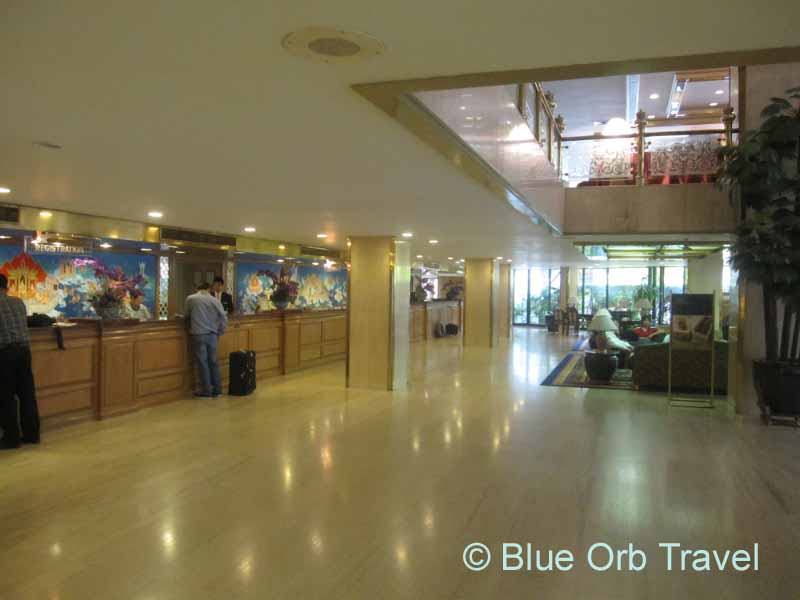

How Bangkok Got Its Name
OK, now that I’ve got your attention, perhaps you’ve wondered about some of the place names in Thailand, like Bangkok and Phuket (and we won’t even mention Bang Sue, Dong Rak and Ban Pornpis). As you can well imagine, the way you pronounce them can make a big difference! So where did these appellations come from and what do they mean? Actually, the name for Thailand’s capital city came from the Thai word bang, meaning village on a stream, and ko, meaning island. This makes perfect sense, considering the vital importance of the many waterways in this region, especially the rivers and canals of Bangkok. The beach studded island of Phuket (Careful! It’s pronounced pu-ket.) off the southwestern coast of peninsular Thailand is a perennial favorite of American sailors who are attracted by the name, the girls and the bars, not necessarily in that order. The name comes from bukit, meaning hill, after the mountainous terrain of the island. So, in Thailand the names can be long, interesting and often amusing and this fascinating feature of Thai culture extends to family names as well. Just ask the famous Thai boxer, Terdsak Kokietgym!

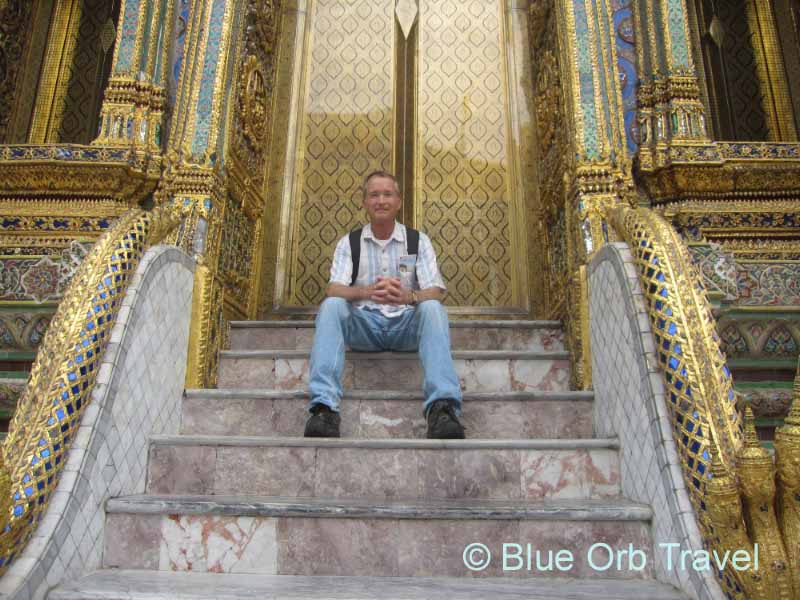
Getting Your Bearings in a Very Big City
Bangkok is one of the largest cities in the world, both in terms of size and population, so it’s not surprising that I found it somewhat complicated trying to figure out how to get around. Fortunately, many shop owners, policemen and taxi drivers speak enough English to make communication fairly easy. As in my case, many visitors will arrive in Thailand at the huge Hua Lamphong Railway Station located in the center of Bangkok. In addition to the shops and fast food outlets within this 100 year old architectural wonder, I was also glad to find a convenient and reliable money changer. The lobby is continuously crowded with travelers making connections to the Malay Peninsula, Laos, Cambodia and other cities throughout Thailand. Bangkok has a great Mass Rapid Transit (MRT) system connecting major points in the city, the Railway Station and the Suvarnabhumi Airport (Bangkok International Airport). There’s one of those long names again! Just a half hour walk from the train station I found a wonderful place to stay, The Montien Hotel, which I will feature in the next article. Just a quick safety note…remember while you are walking through Bangkok, that it is important to stay hydrated. Although I found almost no MacDonald’s in Bangkok, there seemed to be a 7-Eleven every half a block! They turned out to be a great place to cool off for a few minutes while I bought another cold bottle of water.
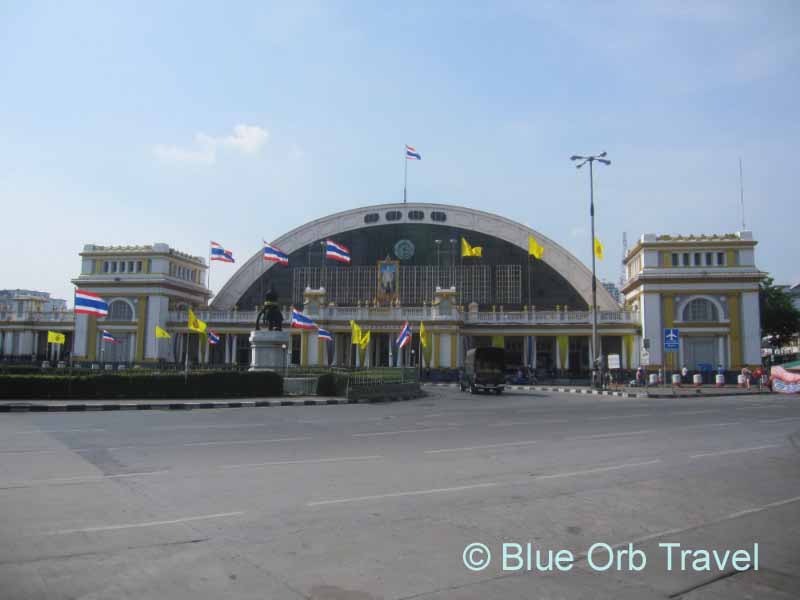

The Ubiquitous Tuk-Tuk
Walking this huge city is out of the question and you will almost certainly need to use the MRT, taxis or tuk-tuks to help you get from one district to another. This was my first introduction to the ever present tuk-tuk in its many forms found throughout Southeast Asia. The tuk-tuk is best described as a three-wheel rickshaw powered by either a bicycle or a motor scooter. Some seem almost to have been put together by the owner from spare parts, while others are the more substantial factory built models known as an auto-rickshaw. You will not have any trouble finding a tuk-tuk, as they are on almost every street corner and you will hear the familiar toot of the horn as you’re walking, ‘asking’ if you’d like a ride. The drivers are universally friendly and helpful, fares are generally reasonable and it’s a hoot driving through the busy streets in the open air. One word of caution…if the fare seems too good to be true, be prepared to make a detour to a jewelry store or tailor shop where the driver gets a commission, before getting to your destination. Speaking of friendly, the Thai policemen are also happy to assist tourists and I found the small police huts situated throughout the city to be a great place to get directions in a pinch. One evening when I was totally lost and exhausted, an officer actually came out of the hut and walked me to the nearest taxi stop, flagged down a taxi for me and gave the driver instructions to my hotel! All right, I know what you’re thinking, but honest, I hadn’t had a drop to drink!
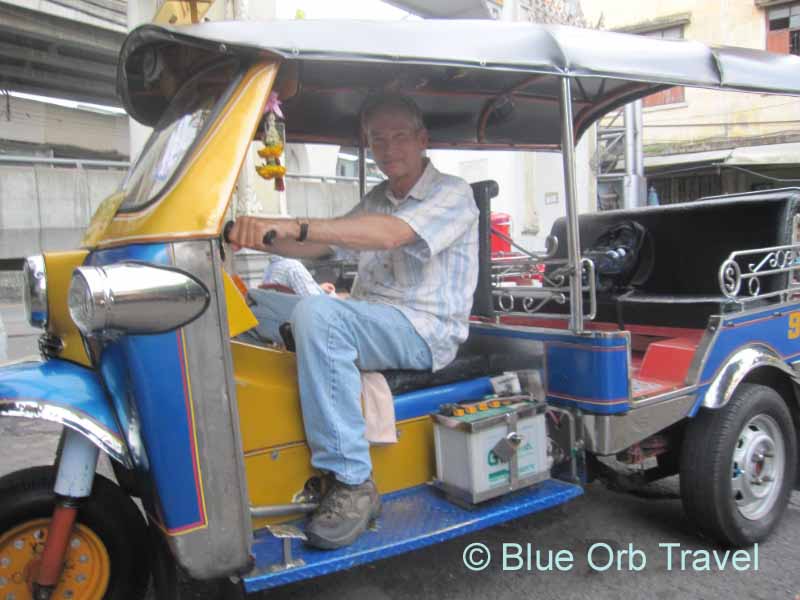
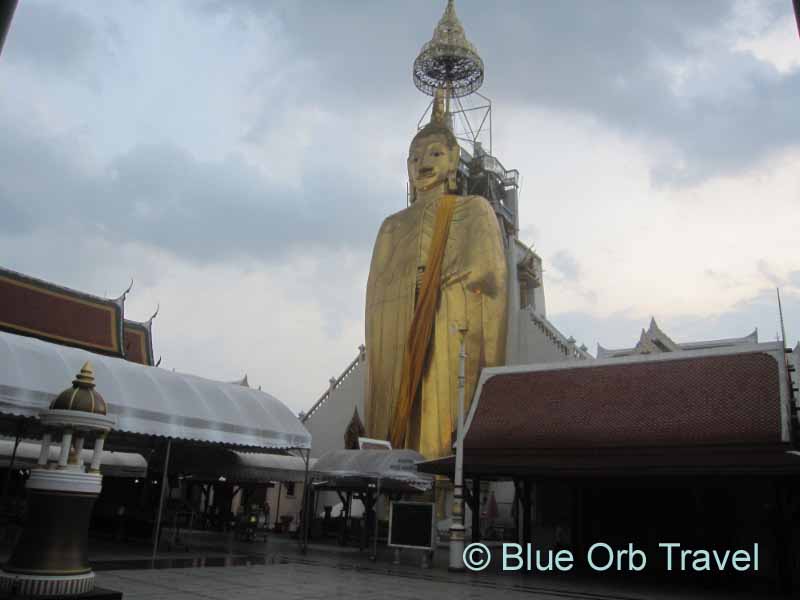
The Grand Palace
Perhaps the most famous tourist destination in Bangkok is the Grand Palace, home of the world’s longest reigning monarch, His Majesty the King, Bhumibol Adulyadej. The construction of this 60 acre complex of temples, residences, courts and gardens on the east bank of the Chao Phraya River began in 1782 and while the current monarch resides in Chitralada Palace, the Grand Palace is still used for official functions. Surrounded by defensive walls, the inner courts are opened to the public every day from 0830 to 1530 and the entrance fee is about $13.00. This is a must see for every visitor to Southeast Asia and I think once you have been there you will agree that the palace rivals Versailles and the temples give the Sistine Chapel a good run for its money. Visitors will be dazzled by the ornate buildings, the splendid architecture and the unbelievable sight of more gold than you can imagine. One of the most famous structures within the complex is the Temple of the Emerald Buddha or Wat Phra Kaew, dating back to 1785. Interestingly, the Emerald Buddha is actually made of jade.

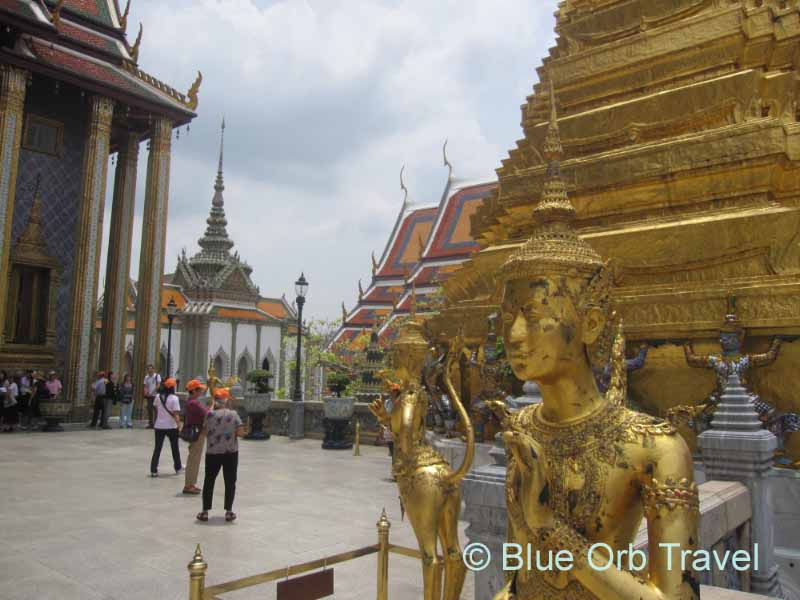
Down by the Chao Phraya River
Many of the most important sites in Bangkok are located near the Chao Phraya River, which is an easy walk from the Grand Palace. Almost adjacent to the Grand Palace is the impressive Reclining Buddha in the Buddhist temple known as Wat Pho, which has been mercifully shortened from Wat Phra Chettuphon Wimon Mangkhlaram Ratchaworamahawihan! Covered in gold leaf and measuring 151 feet long, this Buddha will impress even the most jaded tourist. The entrance fee is just over $3.00. Next, go to the nearby pier and catch a water taxi crossing the Chao Phraya River to visit Wat Arun or the Temple of Dawn. By now you have probably figured out that wat means temple in the Thai language. Wat Arun is probably the most recognizable landmark in Bangkok next to the Grand Palace and for an entrance fee of about $1.50 you can explore the grounds and gardens and climb the steep stairs to the top of the main prang or tower for a spectacular view back across the river to Bangkok. Crossing the river once again and heading up north, you can visit the 100 foot tall Standing Buddha, dating back to 1867. It is located within the temple Wat Intharawihan, affectionately known as Wat In, and admission is free. The Standing Buddha is kept company by an impressive array of cats which seem to have taken up residence on the grounds. Be sure to join us for our next article which will review a wonderful hotel near the center of Bangkok, The Montien Hotel.


It’s an remarkable post for all the online visitors; they will take advantage from it I am sure.
Admiring the commitment you put into your site and in depth information you
present. It’s good to come across a blog every once in a while that isn’t the same unwanted rehashed
information. Excellent read! I’ve saved your site and I’m adding your RSS
feeds to my Google account.
Your mode of describing all in this piece of writing
is actually good, every one can easily understand it, Thanks a lot.
Comments are closed.
Pingback: The Montien Hotel, Bangkok, Thailand | Blue Orb Travel
Pingback: The Montien Hotel, Bangkok, Thailand - Blue Orb Travel
Pingback: Bangkok, Thailand - Blue Orb Travel